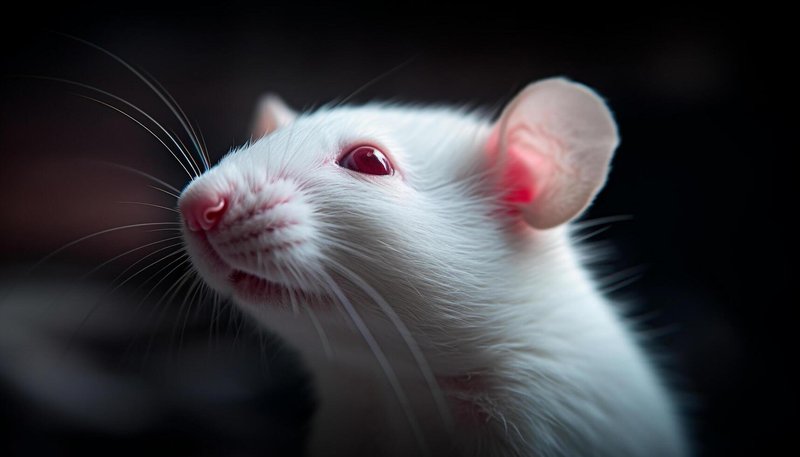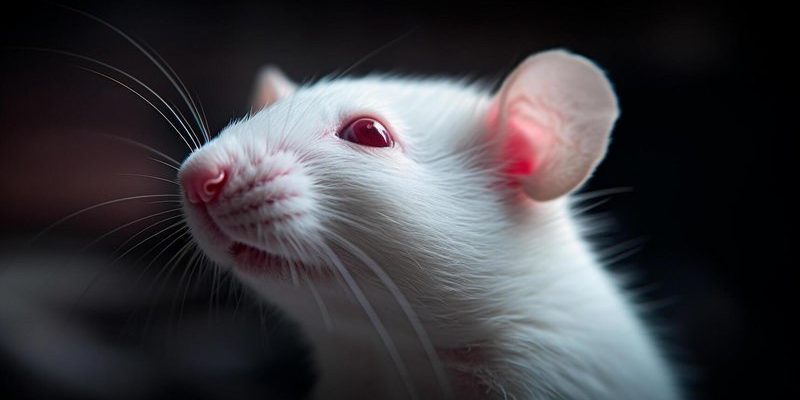
Albino mice are often favored in scientific research due to their distinct genetic traits. Their lack of pigmentation makes them a bit different from their more common gray counterparts, making them essential for various studies. But before diving into the characteristics of these intriguing rodents, let’s explore their appearance, temperament, and what makes them so special in the animal kingdom.
What Are Albino Mice?
Albino mice are essentially a variation of standard house mice, scientifically known as *Mus musculus*. What sets them apart is their genetic mutation that results in a lack of melanin. This means they miss out on the typical colors you’d expect to see in mouse fur. Instead of browns and grays, you get a striking white coat that can almost look like a little ball of snow skittering across the floor.
These mice often have red or pink eyes, another result of their albinism. This unique trait can sometimes make them a little more sensitive to light, so don’t be surprised if you notice them being cautious in bright settings. In fact, their sensitivity to light is one reason you might find them most active during dawn or dusk, escaping the harsh rays of the sun.
Physical Traits of Albino Mice
Let’s talk about what makes these little creatures stand out physically. Beyond their movie-star looks, albino mice have characteristics that are quite similar to their colored counterparts. They usually weigh between 20 and 40 grams and measure about 5 to 10 inches long, including their tail.
Their fur is soft and fluffy, giving them a cuddly appearance. Interestingly, the absence of pigmentation doesn’t affect their overall health, but they do tend to have a shorter lifespan—typically around 2 to 3 years. Some pet owners find that they require a bit more care in terms of their living environment, as they are more vulnerable to temperature changes. So, keeping them cozy is essential!
Temperament of Albino Mice
If you’re thinking about getting an albino mouse as a pet, you’ll be happy to know they have sweet temperaments. Generally speaking, they are friendly and sociable, especially when handled gently from a young age. You might find yourself bonding with them as they become accustomed to your presence, often learning to recognize your voice and approach.
Mice, in general, can be quite curious and playful. They love to explore their environment—whether that’s a spacious cage or a secure play area. Albino mice are known for their intelligence, and with training, you can even teach them a few tricks! Just remember, they can become stressed if they’re not used to handling, so take it slow.
Care Requirements for Albino Mice
Caring for an albino mouse is relatively straightforward, but there are some key points to consider to keep them happy and healthy. First and foremost, you’ll need an appropriate habitat. A spacious cage with proper ventilation is essential. Be sure to include plenty of bedding for nesting, as they enjoy burrowing.
Their diet plays a crucial role in their well-being. A balanced diet for albino mice typically includes high-quality rodent pellets, fresh fruits, and vegetables. You might be surprised to learn that they love little treats like seeds or nuts, but these should be given sparingly to avoid obesity.
Regular handling is important, too. Aim to spend a little time each day playing with or observing your mouse. This not only helps in socializing them but also allows you to keep an eye on their health.
Common Health Issues in Albino Mice
While albino mice can be quite resilient, they are prone to certain health issues. One of the most common problems is respiratory infections, especially in environments that are not kept clean. Signs to watch for include sneezing, labored breathing, or a lack of appetite.
They can also be more susceptible to skin issues, as their lack of pigmentation may expose them to sensitivities. Regularly checking for any unusual fur loss or skin irritations can help you catch potential problems early. As with any pet, routine vet check-ups can ensure you stay on top of their health.
Albino Mice as Pets vs. Research Subjects
You might be wondering about the difference between having an albino mouse as a pet compared to their use in research. While the two roles are very different, they share some traits. For one, both pet albino mice and research mice are generally bred for specific traits, leading to healthier specimens.
When it comes to pets, the focus is on companionship and learning about their behaviors, as they can be delightful little creatures to have around. In research, albino mice serve as important models for studying genetic diseases, pharmacology, and other scientific fields due to their consistent traits. It’s fascinating how these little beings contributed so much to both companionship and science.
In summary, albino mice are truly unique creatures with their striking appearance and friendly demeanor. They can make great pets for those who are willing to put in the time for care and socialization. Understanding their traits, needs, and the differences in their roles—whether as pets or research subjects—can help you appreciate them even more.
So, if you ever spot one of these little white mice, take a moment to appreciate not just their beauty, but also the fascinating traits and behaviors that make them so special. They might just be the charming companions you’ve been looking for!

